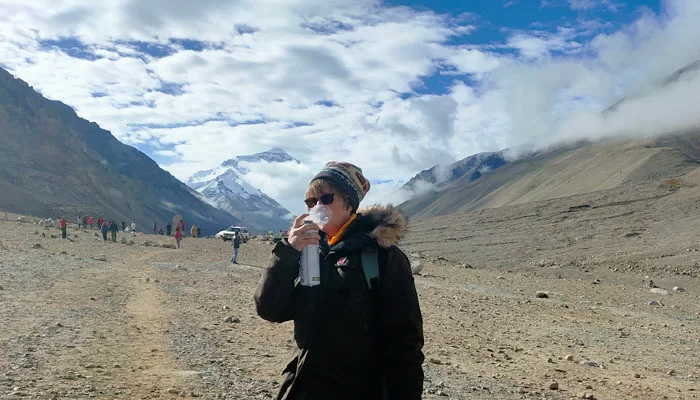Traveling to high-altitude destinations can be a thrilling adventure, offering stunning views and unique experiences. However, it’s essential to prepare adequately to ensure a safe and enjoyable trip. Whether you’re hiking in the Himalayas, exploring the Andes, or visiting high-altitude cities like La Paz or Lhasa, understanding how to handle the challenges of high altitudes can make a significant difference. In this article, we will provide ten valuable tips to help you navigate high-altitude environments, so you can make the most of your journey.

1. Understand Altitude Sickness
What is Altitude Sickness?
Altitude sickness, also known as acute mountain sickness (AMS), occurs when you ascend to high altitudes too quickly, and your body struggles to adjust to the decreased oxygen levels. Symptoms can include headaches, dizziness, nausea, fatigue, and shortness of breath. In severe cases, it can lead to more dangerous conditions like high-altitude pulmonary edema (HAPE) or high-altitude cerebral edema (HACE).
How to Recognize Symptoms
Recognizing the symptoms of altitude sickness early is crucial for taking appropriate action. If you experience headaches, nausea, dizziness, or difficulty breathing, it’s essential to stop ascending and allow your body to acclimatize. If symptoms persist or worsen, descending to a lower altitude is the best course of action.
2. Ascend Gradually
Plan Your Itinerary
One of the most effective ways to prevent altitude sickness is to ascend gradually, allowing your body time to acclimatize. Plan your itinerary to include rest days at intermediate altitudes, especially if you’re climbing or trekking to high elevations. This approach gives your body time to adjust to the changes in oxygen levels and reduces the risk of altitude-related illnesses.
Follow the “Climb High, Sleep Low” Rule
When trekking or climbing at high altitudes, follow the “climb high, sleep low” rule. This means ascending to a higher altitude during the day and returning to a lower altitude to sleep. This strategy helps your body acclimate more effectively, reducing the risk of altitude sickness.
3. Stay Hydrated

The Importance of Hydration
Staying hydrated is essential when traveling to high-altitude places. Dehydration can exacerbate the symptoms of altitude sickness, so it’s crucial to drink plenty of water throughout the day. Aim for at least 3 to 4 liters of water per day, and adjust your intake based on your activity level and environmental conditions.
Avoid Alcohol and Caffeine
Both alcohol and caffeine can contribute to dehydration, making it more challenging for your body to adjust to high altitudes. It’s best to limit or avoid these substances until you’re fully acclimatized. Instead, focus on consuming water, herbal teas, or electrolyte-rich drinks to maintain hydration levels.
4. Fuel Your Body with Nutrient-Rich Foods
High-Energy Meals
At high altitudes, your body requires more energy to function efficiently, so it’s essential to consume nutrient-rich foods that provide the necessary fuel. Focus on meals that include carbohydrates, proteins, and healthy fats to sustain your energy levels throughout the day. Foods like whole grains, lean meats, nuts, and fruits are excellent options.
Snacks for Sustained Energy
Carry high-energy snacks like energy bars, trail mix, or dried fruits to keep your energy levels up during hikes or excursions. These snacks provide a quick source of carbohydrates and calories, helping you maintain stamina and focus.
5. Get Adequate Rest
Prioritize Sleep
Adequate rest is crucial for acclimatization and overall well-being at high altitudes. Make sure you get enough sleep each night, and consider taking short naps during the day if needed. Resting allows your body to recover and adapt to the new environment, reducing the risk of altitude sickness.
Listen to Your Body
Pay attention to how your body feels and respond accordingly. If you’re feeling fatigued or experiencing symptoms of altitude sickness, take a break and rest. Pushing yourself too hard can increase the risk of complications, so it’s essential to prioritize your health and well-being.
6. Dress Appropriately

Layering for Changing Conditions
Weather conditions can change rapidly at high altitudes, so it’s essential to dress in layers that can be easily added or removed. Start with a moisture-wicking base layer, add insulating layers for warmth, and top it off with a waterproof and windproof outer layer. This approach allows you to adjust your clothing to match the current conditions, keeping you comfortable and protected.
Protect Against UV Exposure
High-altitude environments expose you to increased levels of UV radiation, making sun protection essential. Wear sunscreen with a high SPF, lip balm with UV protection, sunglasses, and a wide-brimmed hat to shield yourself from harmful UV rays.
7. Use Acclimatization Aids
Medications
In some cases, medications like acetazolamide (Diamox) can help prevent or reduce the symptoms of altitude sickness. Consult with a healthcare professional before your trip to determine if medication is appropriate for you. It’s essential to follow the recommended dosage and instructions to ensure safety and effectiveness.
Oxygen Support
Portable oxygen canisters or oxygen concentrators can provide supplemental oxygen if you experience severe symptoms or need additional support during high-altitude excursions. Familiarize yourself with the proper use of these aids before your trip to ensure you’re prepared if the need arises.
8. Stay Informed and Plan Ahead
Research Your Destination
Before traveling to a high-altitude destination, research the specific location to understand the elevation, climate, and potential challenges you may encounter. This information will help you prepare adequately and anticipate any issues that may arise during your trip.
Monitor Weather Conditions
Keep an eye on weather forecasts and conditions, as high-altitude environments can experience sudden changes. Being aware of the weather will help you plan your activities accordingly and ensure your safety.
9. Travel with a Buddy or Group

Safety in Numbers
Traveling with a companion or group can enhance safety and provide additional support in high-altitude environments. Having someone with you ensures that there is help available if you experience symptoms of altitude sickness or encounter other challenges.
Share Your Itinerary
Share your travel plans and itinerary with friends or family members who are not traveling with you. This ensures that someone is aware of your whereabouts and can provide assistance or alert authorities if needed.
10. Be Prepared to Descend
Recognize When to Descend
If you experience severe symptoms of altitude sickness, such as difficulty breathing, confusion, or loss of coordination, it’s crucial to descend to a lower altitude immediately. Delaying descent can lead to serious health complications, so it’s essential to prioritize your safety and well-being.
Have a Contingency Plan
Prepare a contingency plan in case you need to descend or alter your itinerary due to altitude-related issues. Familiarize yourself with nearby medical facilities, transportation options, and alternative routes to ensure you’re prepared for any situation.
Final Thoughts
Traveling to high-altitude destinations offers an incredible opportunity to explore breathtaking landscapes and unique cultures. However, it’s essential to be prepared and informed to ensure a safe and enjoyable experience. By understanding the risks of altitude sickness, planning your itinerary carefully, staying hydrated, and listening to your body, you can make the most of your high-altitude adventures. With these tips in mind, you’ll be well-equipped to navigate the challenges of high-altitude travel and create unforgettable memories. If you like High Altitude Places then you can also check our topics on – Trip to Arunachal Pradesh – Itinerary to the ‘Land of the Dawn-Lit Mountains’ and 10 Reasons to Visit Nepal – Why it is so affordable for the Tourist and the Best destination for Mountaineering?








